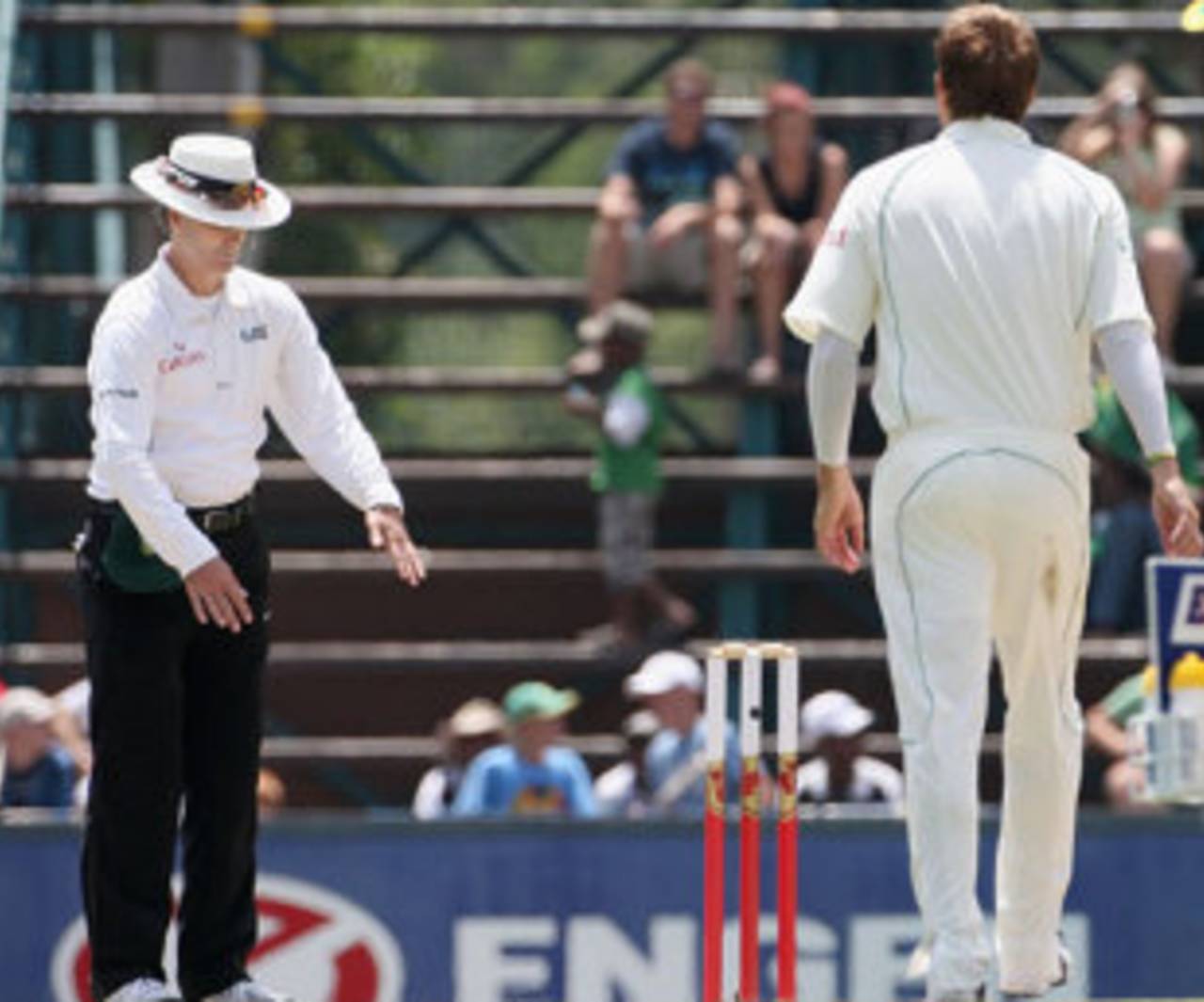With the referral system about to be introduced into Test cricket on a full-time basis, there are no signs that the standard of international umpiring is improving. If anything, it's going the other way. There are some real howlers being made; not mistakes, anybody can make those, but bad umpiring decisions.
Borderline decisions are part of the game, and either way they are accepted by players. However, when a left-arm over the wicket bowler isn't swinging the ball back into a right-hand batsman and an umpire awards an lbw from a length delivery, that's a bad decision. The fact that the umpire is even contemplating a decision in favour of the bowler means he has a tenuous understanding of the lbw law; that's a mistake.
For umpires to make such mistakes I'm wondering if they are being influenced by some of the gimmicks used on television. Hawk-Eye's predictive path has the ball hitting the stumps a high percentage of the time. Anybody who has watched a net session where a bowler is operating with three stumps and no batsman and landing on a good length will tell you the ball rarely disturbs the furniture. This is particularly so on pitches where there's a bit of bounce.
There are some lbw appeals where you know immediately the umpire shouldn't be giving them out, but the ball is shown on television to be clipping the outside edge of the stumps. Does this tend to influence the on-field umpire's decision-making?
The ICC needs to be wary of the referral system. What is sometimes called "technology" actually involves a human hand; it may add to the viewer's entertainment, but it should not be used to decide the fate of a batsman in Test cricket.
It would be ironic if umpires, in the name of fairness, aren't allowed to stand in Tests where their country is playing, but a behind-the-scenes-operator who has a "home side" involved in the match has a say in the decision-making process. Also, will these behind-the-scenes- operators be subject to the same corruption regulations that apply to players and officials? If they're not, they should be.
It's time to concentrate on ways to improve the standard of umpiring rather than harbour the misguided belief that the use of more "technology" is going to enhance the officiating. The reliance on off-field help in the decision-making process is part of the problem rather than being the solution.
Utilising "technology" that involves a human hand in the umpiring process could have an adverse affect on the balance between bat and ball
One solution could be to ensure the best umpires are standing wherever possible.
It's ludicrous that Simon Taufel, who has been judged the best international umpire for the last five years, can't participate in an Ashes series or stand in a Test on his home ground in Sydney.
In the early part of his umpiring career former England allrounder Peter Willey was regarded very highly by the players but he didn't want to be away from home regularly, so he wasn't included on the international panel. He should have at least been umpiring Tests in England.
In my experience, if there's a really good umpire standing it has a positive influence on his partner. As captain in the Caribbean in 1972-73 I perceived there could be trouble looming in the Guyana Test, so I told the officials we would accept any other umpire as long as Douglas Sang Hue was standing. Sang Hue was one of the best umpires I played under and a man of great integrity, and I had no doubt the match would be played in the right spirit while he was on the field.
Utilising "technology" that involves a human hand in the umpiring process could have an adverse affect on the balance between bat and ball. As former West Indies fast bowler Michael Holding commented during the recent Oval Test; "Get ready for two-day Tests if they use the predictive path of Hawk-Eye in the referral system."
Holding is correct. In the last decade there has been a tendency towards flatter Test pitches, supposedly in order to avoid early finishes. With the introduction of the referral system, curators will have their work cut out prolonging matches.
Former Australia captain Ian Chappell is now a cricket commentator and columnist
